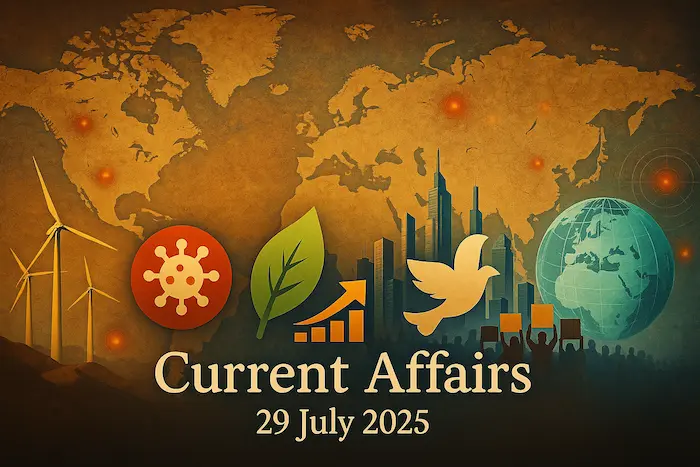1. Internal Complaints Committee (ICC) under the POSH Act, 2013 – Governance

Why in News?
A tragic incident in Odisha, where a female student died by suicide after her sexual harassment complaint was reportedly rejected by the college’s Internal Complaints Committee (ICC), has brought national attention to the ineffective implementation of grievance redressal mechanisms under the POSH Act.
About the POSH Act, 2013
- Full Name: Sexual Harassment of Women at Workplace (Prevention, Prohibition and Redressal) Act, 2013.
- Objective: To ensure a safe, secure, and dignified working environment for women by providing a redressal mechanism for complaints of sexual harassment.
- Origin: Enacted following the Vishaka Guidelines laid down by the Supreme Court in Vishaka vs. State of Rajasthan (1997).
Internal Complaints Committee (ICC): Key Features
- Mandate: Every workplace or institution with 10 or more employees must constitute an Internal Complaints Committee (ICC).
- Composition of ICC:
- Presiding Officer: Senior-level woman employee.
- Two or more internal members with experience in legal/social work.
- One external member from an NGO or legal background with knowledge of sexual harassment issues.
- At least 50% members must be women.
- Jurisdiction and Powers:
- Complaint Timeline: Complaint must be filed within 3 months of the incident.
- Inquiry Powers: ICC functions like a civil court — can summon, examine evidence and witnesses.
- Timelines:
- Inquiry to be completed within 90 days.
- Final report to employer within 10 days.
- Employer to act on recommendations within 60 days.
- Confidentiality is mandatory throughout the process.
- Post-Inquiry Action:
- Recommend punishment, warnings, or closure of case.
- May assist in filing FIR if the complainant opts for criminal proceedings.
Significance and Concerns
- Significance:
- Empowers women to report harassment.
- Institutionalizes gender justice in workplaces and academic institutions.
- Promotes accountability and deterrence against misconduct.
- Challenges in Implementation:
- Lack of awareness among students and employees.
- Bias or incompetence in ICC composition.
- Under-reporting due to fear of retaliation.
- Inadequate external oversight or follow-up on ICC recommendations.
- Misuse or dismissal of complaints without due inquiry.
Exam Connect – Possible Questions
Prelims
- Under the POSH Act, 2013, it is mandatory for an organization to constitute an Internal Complaints Committee (ICC) if it has:
A. More than 5 female employees
B. More than 10 employees (irrespective of gender)
C. More than 20 employees
D. More than 5 male employees
Answer: B. More than 10 employees (irrespective of gender) - Which of the following is not a function of the Internal Complaints Committee (ICC)?
A. Conduct inquiry into complaints of sexual harassment
B. Summon and examine witnesses
C. Register FIRs independently without consent
D. Recommend disciplinary action after inquiry
Answer: C. Register FIRs independently without consent - What is the maximum time period within which the ICC must complete its inquiry into a complaint?
A. 30 days
B. 60 days
C. 90 days
D. 120 days
Answer: C. 90 days
Mains
- “The POSH Act has created a legal framework for gender justice at the workplace, but its implementation remains patchy.” Critically examine the effectiveness of Internal Complaints Committees (ICC) under the POSH Act. Suggest measures to strengthen their functioning.
- Discuss the role of educational institutions in ensuring safe spaces for women. How can administrative mechanisms be improved to handle sensitive complaints effectively?
2. Ancient India’s Chola Dynasty and Its Legacy – History & Culture
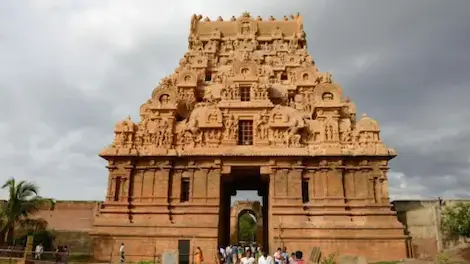
Why in News?
Prime Minister Narendra Modi recently visited Gangaikonda Cholapuram in Tamil Nadu during the Aadi Thiruvathirai festival to commemorate the birth anniversary of Emperor Rajendra Chola I. In his address, he emphasized the historical achievements of the Chola dynasty and highlighted the Kudavolai system, comparing it to early Western democratic practices like the Magna Carta (1215 CE).
About the Chola Dynasty
- The Chola Dynasty was one of the longest-ruling and most influential dynasties in South Indian history, flourishing roughly from the 9th to the 13th century CE.
- Their power peaked under the rule of Rajaraja Chola I and his son Rajendra Chola I, expanding from Tamil Nadu to parts of Southeast Asia, the Maldives, and as far as the Ganges River in the north.
Key Features and Achievements
1. Military & Maritime Power
- Developed a powerful navy, enabling maritime trade and conquest.
- Notable campaigns include Rajendra Chola I’s expedition to Southeast Asia (e.g., Srivijaya Empire).
2. Cultural and Architectural Contributions
- Built grand temples like Brihadeeswarar Temple (Thanjavur) and Gangaikonda Cholapuram, examples of Dravidian architecture.
- Patronized Tamil literature, dance, and fine arts.
3. Administrative Innovations
- Well-organized bureaucratic governance with local self-governing units.
- Practiced a detailed revenue and land assessment system (e.g., village sabhas, ur, nadu).
4. The Kudavolai System (Grassroots Democracy)
- An electoral system used in local village assemblies.
- Used ballot pots (kudavolai) to randomly select eligible and qualified individuals for public office.
- Stringent eligibility norms ensured integrity: age, property ownership, education, and moral character.
- Documented in the Uttaramerur inscriptions.
Modern Relevance Highlighted by PM Modi
- The Chola system offers a historical model of democracy and decentralization.
- PM Modi emphasized their inclusive governance, cultural vision, and strategic development, drawing parallels with India’s current developmental goals.
- Initiatives like Kashi Tamil Sangamam and the repatriation of Indian artifacts are part of the effort to reclaim and celebrate India’s indigenous heritage.
Significance in Indian History
- Counters the narrative that democracy is purely a Western import.
- Shows how local self-governance, transparency, and people’s participation existed in ancient India.
- Demonstrates India’s maritime connections, early imperialism, and soft power diplomacy through trade and culture.
Exam Connect – Possible Questions
Prelims
- Which of the following temples was built by Rajaraja Chola I?
A. Meenakshi Temple, Madurai
B. Brihadeeswarar Temple, Thanjavur
C. Shore Temple, Mahabalipuram
D. Lingaraja Temple, Bhubaneswar
Answer: B. Brihadeeswarar Temple, Thanjavur - The Kudavolai system, practiced during the Chola period, was primarily associated with:
A. Military recruitment
B. Maritime navigation
C. Village-level elections
D. Tax collection
Answer: C. Village-level elections - Which of the following inscriptions provides evidence of the Kudavolai system?
A. Hathigumpha inscription
B. Allahabad pillar inscription
C. Uttaramerur inscription
D. Aihole inscription
Answer: C. Uttaramerur inscription
Mains
- “The Chola Dynasty represents one of the most sophisticated models of pre-modern governance in India.”
Examine the key features of the Chola administration with special reference to the Kudavolai system. - “India’s democratic roots run deeper than generally perceived.”
Critically analyze this statement in the context of local self-governance practices during the Chola period. - Highlight the contributions of the Chola dynasty in promoting art, architecture, and international relations. How can this legacy be revived to strengthen India’s cultural diplomacy?
3. China’s Mega Dam on the Brahmaputra & Concerns in India – International Relations
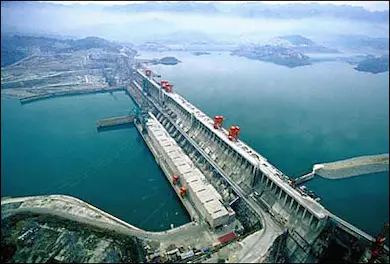
Why in News?
China has officially commenced construction of a massive hydropower dam on the Brahmaputra River (known as the Yarlung Tsangpo in Tibet), near the Arunachal Pradesh border, with a staggering budget of $167.8 billion. This dam is poised to become the largest in the world upon completion, triggering serious concerns in India and Bangladesh about its impact on water security, ecology, and regional geopolitics.
Key Highlights
Project Details
- Located in Medog County, Tibet, close to the Indian border.
- Estimated to generate 60,000 MW — surpassing all existing global hydropower projects.
- Inaugurated by Chinese Premier Li Qiang, signifying high political priority.
Geopolitical & Hydrological Concerns
- India’s Worry: Fear of reduced water flow, sudden floods, and ecological damage downstream in Arunachal Pradesh and Assam.
- Bangladesh’s Fear: A decrease in water availability during dry seasons.
- India’s MEA: Urged transparency and data-sharing, emphasizing the importance of prior consultation with downstream countries.
India’s Regional Concerns
Arunachal Pradesh
- CM termed the dam an “existential threat“.
- Risks include:
- Flash floods from sudden water releases.
- Reduced river flow affecting agriculture, biodiversity, and tribal livelihoods.
- Seismic risk: Dam is located in a tectonically active region, increasing chances of structural failure.
Assam’s Perspective
- CM played down alarmism, noting:
- Brahmaputra’s flow in Assam is largely due to monsoon rains and tributaries.
- Only 30–35% of flow comes from glacial melt and Tibetan rainfall.
- Nevertheless, any major upstream interference can have cascading hydrological effects.
China’s Official Position
- Claims the dam is within its sovereign territory and rights.
- Assures data-sharing and cooperation with downstream nations, especially during flood seasons.
- Emphasizes that the project is hydropower-only, with no intent to divert water.
Environmental & Strategic Implications
Environmental Risks
- Disruption of aquatic ecosystems.
- Increased risk of landslides and erosion.
- Changes in sediment transport affecting river morphology.
Strategic and Diplomatic Concerns
- Highlights the absence of a formal water-sharing treaty between India and China.
- Increases India’s vulnerability to hydrological weaponization during conflicts.
- Encourages India to accelerate its own dam-building projects in the Northeast for hydro-strategic balancing.
India’s Strategic Options
- Strengthen diplomatic engagements with China and regional platforms like BIMSTEC and BBIN.
- Expedite early warning systems and hydrological data collection on Indian side.
- Push for a bilateral or multilateral water treaty with China on the Brahmaputra.
- Invest in environmental impact assessments, catchment management, and community resilience programs in Arunachal and Assam.
Exam Connect – Possible Questions
Prelims
- Which of the following rivers is known as the Yarlung Tsangpo in Tibet?
A. Indus
B. Ganga
C. Brahmaputra
D. Sutlej
Answer: C. Brahmaputra - Which of the following countries are directly affected by the Brahmaputra River’s flow?
A. China, India, Pakistan
B. China, India, Bangladesh
C. Nepal, India, Bhutan
D. China, Myanmar, Bangladesh
Answer: B. China, India, Bangladesh - What percentage of the Brahmaputra’s flow in Assam originates from glacial melt and Tibetan rainfall?
A. 10–15%
B. 20–25%
C. 30–35%
D. 50–60%
Answer: C. 30–35%
Mains
- “Hydrological projects on transboundary rivers can transform into instruments of strategic pressure.”
Discuss in the context of China’s dam on the Brahmaputra and its implications for India’s water security and diplomacy. - Evaluate the challenges India faces in managing transboundary river disputes with China. Suggest measures to build cooperative mechanisms for sustainable river management.
- Examine the disaster preparedness and response strategies required in northeastern states like Arunachal Pradesh in light of upstream river infrastructure developments.
4. India’s First Hydrogen Train Coach: A Step Towards Green Railways – Science and Technology
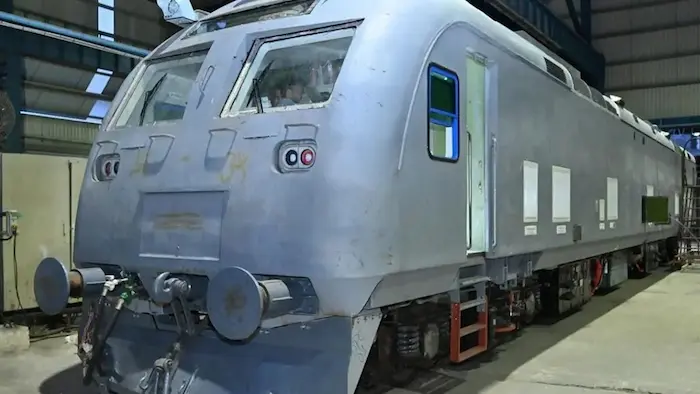
Why in News?
Indian Railways has successfully tested its first hydrogen-powered coach at the Integral Coach Factory (ICF), Chennai, marking a significant step toward launching India’s first hydrogen-powered train. This initiative supports India’s aim to decarbonize transportation, reduce greenhouse gas emissions, and promote renewable energy.
Key Project Highlights
Hydrogen Train Project:
- Launched by: Northern Railway (2020–21).
- Technology: Retrofit of two 1600 HP diesel power cars into hydrogen fuel cell-powered units.
- Capacity: 10-coach train accommodating 2,600+ passengers.
- Route: Between Jind and Sonepat, Haryana.
- Operations: Two daily round trips (total 356 km/day).
Technical and Safety Features
Fuel and Infrastructure:
- Hydrogen stored at a new refuelling facility in Jind, Haryana.
- Storage capacity: 3,000 kg.
- Low pressure: 2,320 kg; High pressure: 680 kg.
- Complies with PESO (Petroleum and Explosives Safety Organisation) standards.
Safety Protocols:
- Flammable nature of hydrogen addressed via:
- Leak detectors, pressure relief valves, ventilation systems, temperature sensors.
- Computational Fluid Dynamics (CFD) used to simulate worst-case hydrogen leaks.
- Independent safety auditor: German firm TUV-SUD.
- Engineering partner: Medha Servo Drives, working with ICF Chennai.
Significance in Green Mobility
Why Hydrogen?
- Zero carbon emissions: By-product is pure water.
- High energy density: Greater than fossil fuels.
- Reduces dependence on diesel, especially in non-electrified rail routes.
- Promotes India’s National Hydrogen Mission goals.
Hydrogen for Heritage Project:
- Plan to deploy 35 hydrogen-powered trains on heritage and hill routes.
- Each train: Approx. ₹80 crore.
- Infrastructure cost per route: ₹70 crore.
- Supports tourism and environmental goals in ecologically sensitive areas.
Global Context and Innovation
- India joins a select group of nations (e.g., Germany, Japan) exploring hydrogen trains.
- Most international projects are still experimental or pilot-phase.
- In 2024, India gifted a hydrogen bus to Bhutan, reflecting broader hydrogen diplomacy.
Exam Connect – Possible Questions
Prelims
- Which of the following is a by-product of hydrogen fuel cell operations?
A. Methane
B. Carbon dioxide
C. Water
D. Sulphur dioxide
Answer: C. Water - India’s first hydrogen-powered train is expected to operate between which two locations?
A. Chennai and Hyderabad
B. Delhi and Agra
C. Jind and Sonepat
D. Kalka and Shimla
Answer: C. Jind and Sonepat - Which organization is responsible for overseeing the design and validation of India’s hydrogen train project?
A. ISRO
B. RDSO
C. DRDO
D. NTPC
Answer: B. RDSO - Under which initiative is India planning to introduce hydrogen-powered trains on heritage and hill routes?
A. Clean India Railways Mission
B. National Electric Mobility Plan
C. Hydrogen for Heritage
D. Bharat Green Tracks Scheme
Answer: C. Hydrogen for Heritage
Mains
- “Hydrogen fuel-based transportation is central to India’s strategy for carbon-neutral mobility.”
Examine the benefits and challenges associated with the adoption of hydrogen-powered trains in India. - Discuss the role of hydrogen fuel cell technology in transforming public transportation in India. What steps should be taken to ensure its safe and widespread deployment?
- Evaluate India’s preparedness for integrating hydrogen-powered trains in its existing railway infrastructure. How can heritage and hill routes benefit from this green technology?
5. World Food India 2025: Boosting India’s Food Processing Sector – Economy
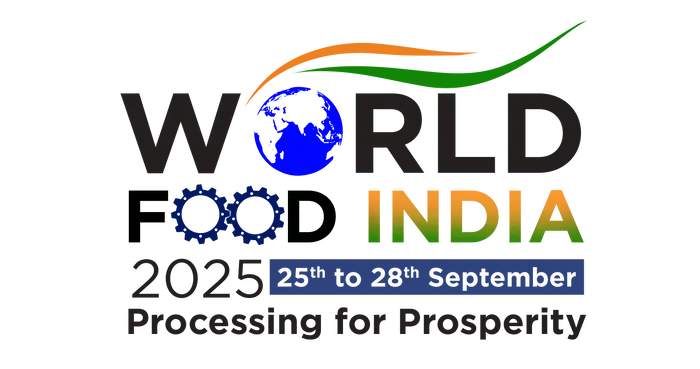
Why in News?
The Ministry of Food Processing Industries (MoFPI) is set to host the 4th edition of World Food India (WFI) 2025 at Bharat Mandapam, New Delhi, starting September 25th, 2025. The event builds on the momentum of earlier editions (2017, 2023, 2024) and is expected to be a major platform for showcasing India’s food processing potential.
Theme for 2025: “Processing for Prosperity”
Key Highlights
What is World Food India (WFI)?
- A flagship international event organized by MoFPI.
- Acts as a platform for global investors, manufacturers, startups, and policymakers in the food processing sector.
- Aims to strengthen global partnerships and showcase India’s potential as a food processing hub.
Objectives of WFI 2025:
- Promote investment opportunities in food processing and related sectors.
- Facilitate technology transfers and global trade linkages.
- Support the Make in India initiative by boosting domestic manufacturing capacity.
- Provide networking for farmers, processors, logistics providers, and exporters.
India’s Food Processing Sector: Overview
- One of India’s largest industries, contributing to employment, agricultural growth, and exports.
- Recognized as a sunrise sector due to rising demand for processed food, urbanization, and supply chain modernization.
- FPI sector’s GVA (Gross Value Added) is steadily increasing, aided by policy and infrastructure support.
Key Government Initiatives
Mega Food Parks Scheme:
- Offers plug-and-play infrastructure to entrepreneurs.
- Set up in agriculturally rich regions with facilities like cold storage, packaging, quality control labs, and logistics.
- Aims to reduce post-harvest losses and enhance value addition at the farm gate.
PM Kisan SAMPADA Yojana:
- Umbrella scheme for agro-marine processing and development.
- Provides financial assistance for:
- Integrated cold chain projects
- Agro-processing clusters
- Food safety and quality assurance
PLI Scheme for Food Processing (2021–2027):
- Production-linked incentive for processed food segments like ready-to-cook, organic food, marine products, and health foods.
- Designed to boost manufacturing and exports.
International Trade & Investment Angle
- WFI helps India position itself as a global hub for food processing exports.
- Facilitates FDI inflows and partnerships with countries seeking reliable food supply chains.
- Encourages technology collaboration for sustainable packaging, processing, and logistics.
Exam Connect – Possible Questions
Prelims
- Which of the following ministries organizes the World Food India event?
A. Ministry of Agriculture and Farmers Welfare
B. Ministry of Commerce and Industry
C. Ministry of Food Processing Industries
D. Ministry of Rural Development
Answer: C. Ministry of Food Processing Industries - What is the theme for World Food India 2025?
A. Food for All
B. Healthy and Safe Food
C. Processing for Prosperity
D. Innovation for Nutrition
Answer: C. Processing for Prosperity - Which of the following schemes is related to plug-and-play infrastructure for food processing industries?
A. PM-FME Scheme
B. Mega Food Parks Scheme
C. Operation Greens
D. PLI Scheme
Answer: B. Mega Food Parks Scheme
Mains
- “The food processing sector can serve as a bridge between agriculture and industry in India.”
Discuss the role of events like World Food India in promoting investment and innovation in this sector. - Examine the importance of food processing in reducing post-harvest losses and enhancing farmers’ income. How can states like Himachal Pradesh benefit from national-level initiatives?
- Highlight the key challenges faced by India’s food processing industry. Suggest policy measures to make the sector globally competitive and sustainable.
6. Deep-Brain Stimulation: A Breakthrough in Neurological Treatment – Science & Technology
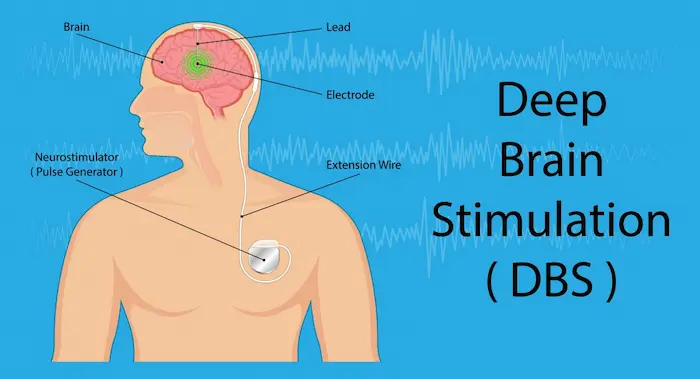
Why in News?
Deep-Brain Stimulation (DBS) is in the spotlight as an advanced neurosurgical technique, already used by over 160,000 individuals worldwide to treat various neurological and psychiatric disorders. New research continues to expand its clinical potential, making it a key topic in medical innovation.
What is Deep-Brain Stimulation (DBS)?
- DBS is a medical procedure in which electrodes are surgically implanted into specific areas of the brain.
- These electrodes are connected to a neurostimulator (like a pacemaker) placed under the skin (usually near the chest).
- The device delivers controlled electrical impulses to help correct abnormal brain activity or chemical imbalances.
How Does It Work?
- The stimulation modulates the brain’s electrical signals, targeting areas where irregular brain activity is causing symptoms.
- Unlike some brain surgeries, DBS does not destroy tissue — its effects are adjustable and reversible.
Key Applications of DBS
Approved Uses:
- Parkinson’s Disease
- Essential Tremor
- Dystonia
- Obsessive-Compulsive Disorder (OCD)
Experimental/Research-Based Uses:
- Treatment-resistant Depression
- Epilepsy
- Tourette’s Syndrome
- Chronic Pain
- Alzheimer’s disease (under clinical trial)
Advantages of DBS
- Reversible and Adjustable: Can be modified or turned off without permanent changes.
- Non-destructive: Unlike surgeries that ablate (destroy) parts of the brain.
- Targeted Therapy: Works on specific brain circuits, offering precision medicine.
- Improved Quality of Life: Especially for patients with movement disorders unresponsive to medications.
Limitations and Risks
- Surgical Risks: Infection, bleeding, or device malfunction.
- Cost and Accessibility: High cost limits widespread adoption in developing countries.
- Side Effects: Mood changes, speech problems, or involuntary movements in some cases.
Relevance in Indian and Global Context
- As India’s burden of neurological and psychiatric disorders rises, technologies like DBS offer non-pharmaceutical options for management.
- India’s neurosurgical facilities in top hospitals (AIIMS, NIMHANS, etc.) are increasingly performing DBS procedures.
- DBS also supports the Make in India initiative if localized manufacturing and R&D are promoted for neuro-devices.
Exam Connect – Possible Questions
Prelims
- Deep-Brain Stimulation (DBS) is primarily used to treat which of the following?
A. Diabetes
B. Asthma
C. Parkinson’s disease
D. Tuberculosis
Answer: C. Parkinson’s disease - Which of the following is not a feature of Deep-Brain Stimulation?
A. Reversible treatment
B. Electrical stimulation of the brain
C. Destruction of brain tissue
D. Use of implanted electrodes
Answer: C. Destruction of brain tissue - Which organization is most likely to regulate the approval of DBS devices in India?
A. DRDO
B. DCGI (Drugs Controller General of India)
C. FSSAI
D. NITI Aayog
Answer: B. DCGI (Drugs Controller General of India)
Mains
- “Deep-Brain Stimulation offers a glimpse into the future of personalized neurological care.”
Discuss the scientific principles, medical applications, and ethical considerations associated with DBS. - Evaluate the potential of Deep-Brain Stimulation in addressing India’s growing burden of neuropsychiatric disorders. What challenges does India face in ensuring equitable access to such advanced therapies?
- How can India balance technological innovation in medical science with the need for affordable and accessible healthcare? Illustrate using the example of Deep-Brain Stimulation.
7. Rethinking Criminalisation under the POCSO Act: Adolescent Autonomy vs. Legal Protection – Polity

Why in News?
The Supreme Court of India is reviewing whether consensual sexual activity between adolescents aged 16–18 should continue to be criminalised under the Protection of Children from Sexual Offences (POCSO) Act, 2012. The debate raises critical questions about adolescent autonomy, legal protection, and misuse of the law.
About the POCSO Act, 2012
- Objective: To provide a robust legal framework to protect children (below 18 years) from sexual offences, including abuse and exploitation.
- Key Provision: Section 2(d) defines anyone below 18 years as a child — thus, consent is legally invalid in any sexual act involving a minor.
- Intent: To safeguard children, especially from coercion, trafficking, abuse, and assault.
Current Issue: Criminalising Consensual Adolescent Relationships
- Adolescents engaged in mutual, consensual relationships are often criminalised under POCSO.
- Legal actions are frequently initiated by parents or disapproving family members, even in non-abusive, consensual cases.
- This leads to:
- Unjust prosecution of teenagers.
- Long-term stigmatisation and disruption of education/careers.
- Contradiction of the Act’s protective spirit.
Key Arguments in the Debate
Arguments for Reform
- Sexual Autonomy: Criminalisation denies teenagers’ agency over their own bodies and relationships.
- Evolving Capacity: As per the UN Convention on the Rights of the Child (UNCRC), adolescents have maturing judgment and decision-making skills.
- Judicial Observations: The Madras High Court and others have suggested that consensual relationships involving minors, especially with small age gaps (within 5 years), should not be punished under the same severity.
Law Commission Recommendation
- Advocates for “guided judicial discretion” — allowing judges to assess:
- The nature of consent
- The age gap
- Absence of coercion or exploitation
- This would help distinguish between abuse and mutual relationships, preventing blanket criminalisation.
Concerns About Decriminalisation
- Potential misuse under the guise of consent, especially in cases involving power imbalances, manipulation, or coercion.
- Risk of normalising early sexual activity in the absence of proper sex education and safeguards.
- Challenge of defining consent in adolescent psychology.
International Practices
- Several countries (e.g., Germany, Canada, UK) have “close-in-age exemptions”, where consensual sex between minors is legal if the age difference is within a certain limit.
- These models recognize adolescent maturity while preventing exploitation.
Exam Connect – Possible Questions
Prelims
- Under the POCSO Act, 2012, what is the age below which a person is considered a child?
A. 14 years
B. 16 years
C. 18 years
D. 21 years
Answer: C. 18 years - Which international convention recognizes the evolving capacities of adolescents?
A. Hague Convention
B. UN Convention on the Rights of the Child (UNCRC)
C. Geneva Convention
D. Paris Climate Agreement
Answer: B. UN Convention on the Rights of the Child (UNCRC) - Which Indian High Court has recently supported the idea of not criminalising consensual adolescent relationships with minimal age difference?
A. Kerala High Court
B. Delhi High Court
C. Madras High Court
D. Bombay High Court
Answer: C. Madras High Court
Mains
- “The POCSO Act, while well-intentioned, needs urgent reform to prevent the criminalisation of normal adolescent behaviour.” Critically examine the challenges and potential legal solutions.
- Discuss the role of the judiciary in balancing the objectives of child protection with the recognition of adolescent autonomy. How can courts ensure that the POCSO Act is not misused?
- “Criminal law must evolve with social realities.” In light of this, evaluate the need for reform in the age of consent laws in India.

